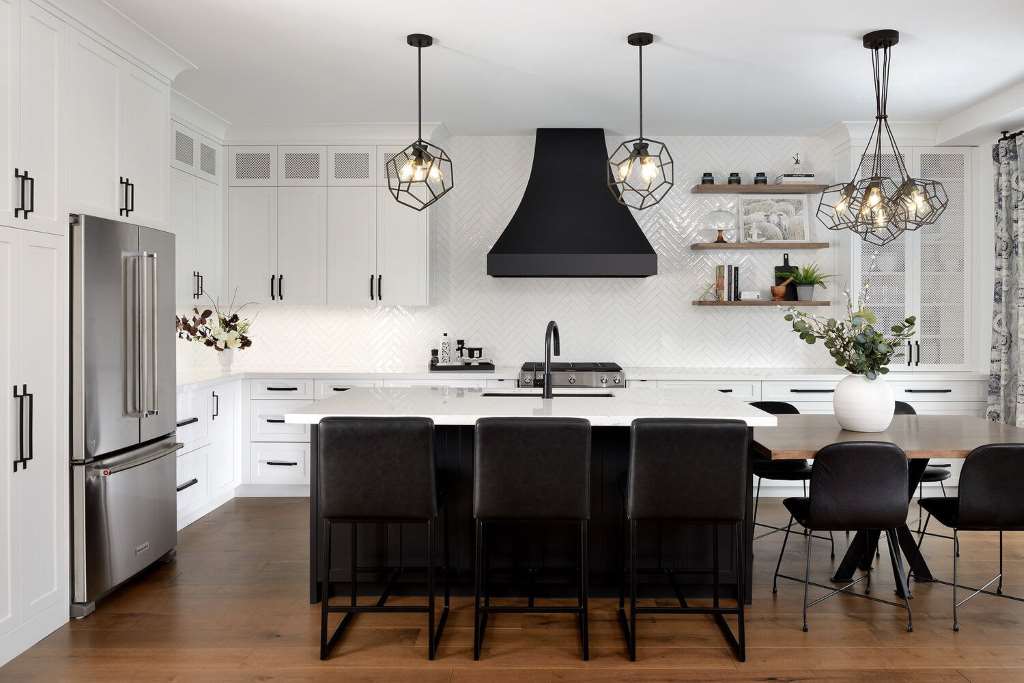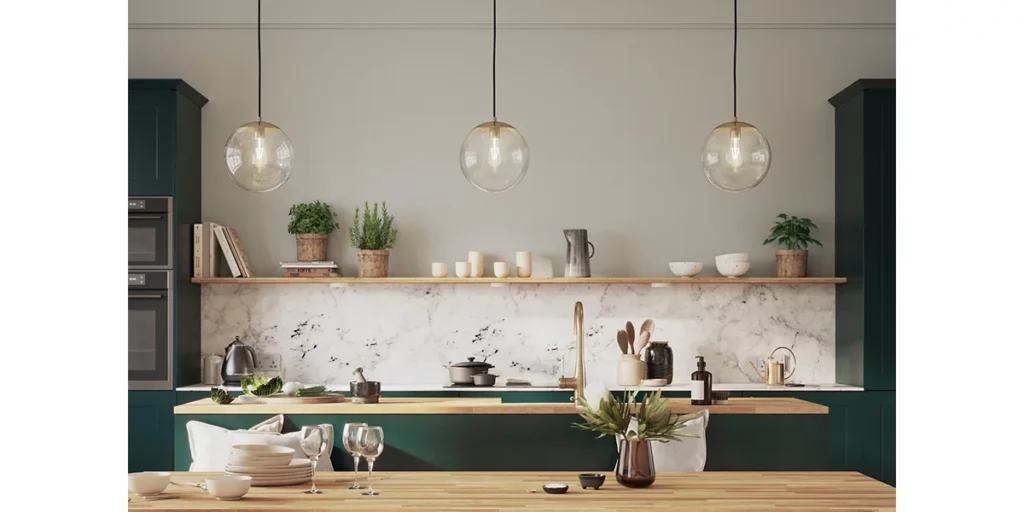
03 May Perfect Harmony: How to Pair Kitchen and Dining Lights
Lighting plays a pivotal role in setting the mood and ambiance of any space. Kitchens and dining rooms, often the heart of the home, deserve special attention when it comes to illumination. While a practical, bright kitchen demands task lighting, a dining area ambiance thrives on warmth and style. Pairing kitchen and dining lights harmoniously is a touch of design magic that can make these spaces more functional and welcoming.
Understanding Lighting Basics
Before diving into pairing your fixtures, let’s brush up on some lighting fundamentals:

- Types of Lighting:
- Ambient lighting: Provides overall illumination for everyday tasks (think: recessed lights, central ceiling fixtures).
- Task lighting: Concentrates light on specific work areas (think: under-cabinet lights, countertop pendants).
- Accent lighting: Creates visual interest by highlighting architectural features or artwork (think: track lights, wall sconces).
- Color Temperature: Measured in Kelvins (K), color temperature influences the ambiance of a space:
- Warm white (2700K-3000K): Cozy and inviting, ideal for dining areas.
- Cool white (3500K-4100K): Bright and crisp, best for task-oriented kitchen areas.
- Daylight (5000K-6500K): Mimics natural sunlight, can be used for task lighting in kitchens.
The Art of Pairing
Pairing kitchen and dining room lights is a balance of practicality, aesthetics, and personal preference. Here are some key guidelines:
- Coordinate, Don’t Match: Aim for a sense of cohesion rather than strictly matching fixtures. Think complementary shapes, finishes, and materials.
- Consider Scale and Proportion: The size of your fixtures should be appropriate for the dimensions of both your kitchen and dining areas. Smaller pendants work well over kitchen islands, while a statement chandelier can anchor a dining area.
- Layer Your Lighting: A winning combination incorporates ambient, task, and accent lighting in both spaces. Recessed lights with dimmers offer flexibility in the kitchen, while a chandelier creates a focal point in the dining area.
- Mix Finishes Tastefully: Incorporating various metals or textures can add depth and interest. Pairing brushed nickel pendants over a kitchen island with a bronze chandelier in the dining area can be both elegant and inviting.
- Choose Your Style: The overall design of your fixtures should align with your decor theme. Modern kitchens pair well with sleek pendants, while a rustic dining space might benefit from a wrought-iron chandelier.
Using High-Impact Windows and Doors to Increase Home Security
Pairing Suggestions for Different Styles
- Modern Minimalist – Clean lines, simple forms. Consider linear pendants in a black matte finish for the kitchen island, paired with a single oversized geometric chandelier in the dining space.
- Transitional – Blending traditional and contemporary elements. Try brushed nickel pendants over the kitchen counter with a drum-shaded chandelier accented with brass details in the dining area.
- Industrial Farmhouse – Rustic and utilitarian. Incorporate exposed-bulb pendants with Edison bulbs above a kitchen island and a distressed metal chandelier over your farmhouse dining table.
Additional Tips For the Adventurous
- Make a Statement: If you’re feeling bold, experiment with a vibrant, colorful chandelier in your dining area to add drama and personality.
- Consider Smart Lighting: Smart systems allow you to control light intensity and color temperature, creating a custom ambiance for any occasion.
- Go Green: Embrace energy-efficient LED fixtures to save money on utility bills while doing your part for the planet.
- Consult a Professional: For more complex spaces, a certified lighting designer can offer tailored solutions that fit your unique needs and vision.
Final Thoughts
Pairing kitchen and dining lights can elevate your home, adding a layer of sophistication and comfort. While adhering to a few core design principles and unleashing a touch of creativity, you’ll transform both spaces into havens of both practicality and personality. Remember, lighting has the power to transform the ordinary into the extraordinary.



Sorry, the comment form is closed at this time.